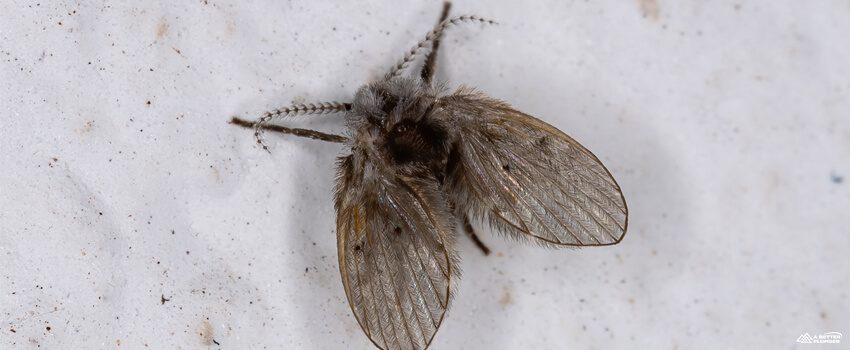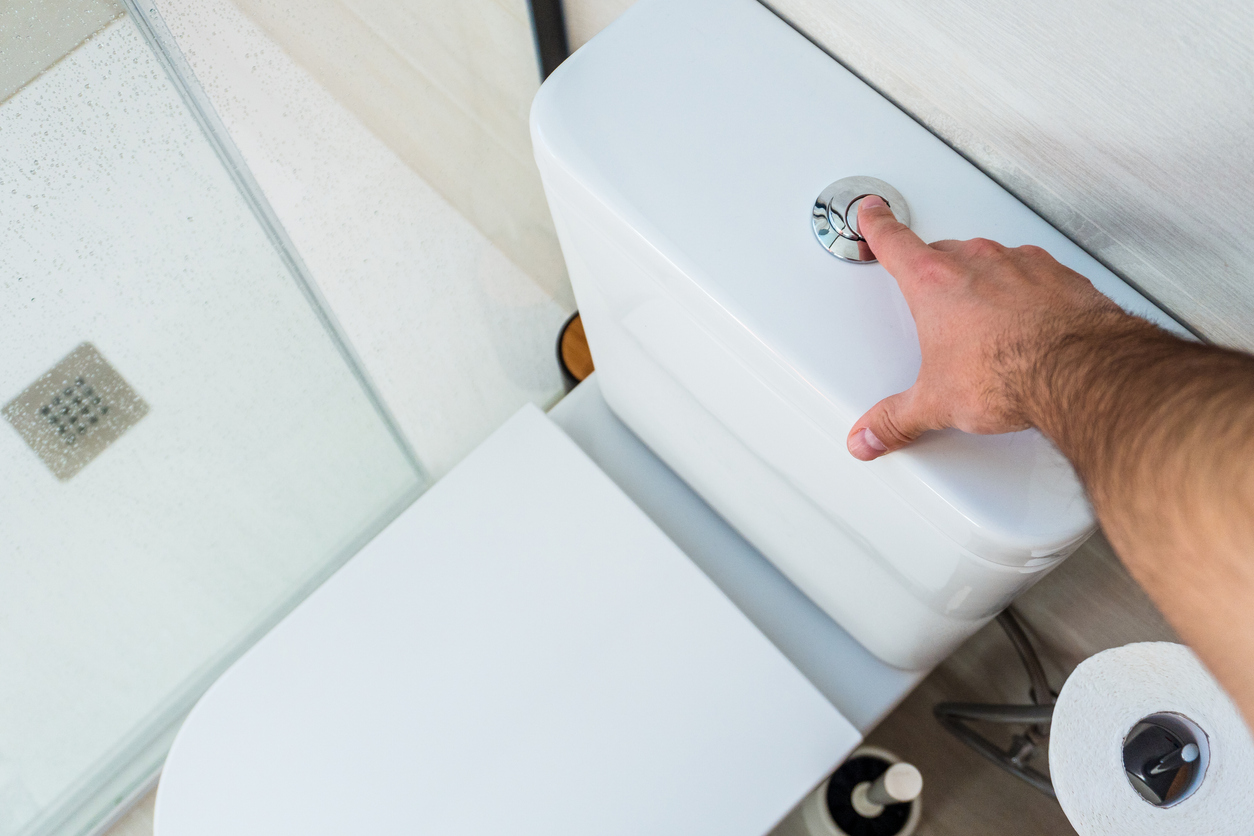4 Simple Ways to Eliminate Drain Flies

The drain fly, which falls under the order Diptera and family Psychodidae, is also known by several other names, including sink flies, filter flies, and drain gnats. It’s known for having only one pair of wings which don’t fold over its back unless this insect is flying.
The typical drain fly measures between 2 and 5mm and can be distinguished from other insects by their moth-like wings, small bodies, and fuzzy, round bodies. Its color is often lighter than other small house flies, ranging from pale gray to black.
What Causes Drain Flies
Sink flies love stagnant waters where small amounts of bacteria and sewage come together. These waters normally form in kitchen, bathroom, shower, and basement sinks, as well as in septic tanks, sewers, and solvent-contaminated soil.
Other than these, sewer flies may lay their eggs in compost piles, buckets, wet mops, storm drains, and wet areas near barns, birdbaths, and garbage. These eggs are usually left on their own by the mother drain fly for as long as she sees that there’s available food for them. This can come in the form of logs, feces, food waste, and damp soil.
Types of Drain Flies
In general, sink flies can be classified into four different types, and these include the following:
1. Moth Flies
The moth fly is considered as the most common drain fly. It has brown or gray hair that covers the wings and body and gives the fly a fuzzy appearance, similar to a moth, hence the name.
The moth fly has leaf-shaped wings that lie flat on one side of the body when this insect isn’t flying. It’s so small, measuring from 1 /6 to 1/5 inches in length that if you want to cover your thumb, it will likely take about four moth flies.
2. Phorid Flies
Just like moth flies, phorid flies breed in any environment that’s rich in decaying organic material such as garbage disposals and drain debris. They are also known to reproduce in rotting carcasses, earning them the nickname “coffin bugs.” Because they love rotting materials, phorid flies are mistaken for fruit flies; however, the latter has large and red eyes while those of phorids are dark.
3. Fruit Flies
As their name implies, fruit flies can be found in places where there is rotting fruit or even vegetables, much like those freckled bananas that you may have stored inside the shelves.
4. Sand Flies
Sand flies are considered a sub-genre of the drain fly family otherwise known as Phlebotominae. They are rare flies in North America, but since they feed on blood, they can transmit blood-related diseases just like those that come from certain mosquito types.
Is a Drain Fly Harmful?
The drain fly is generally not harmful or dangerous. Although they consume bacteria and sewage waste, they aren’t disease-carrying bugs, but they can be annoying. Since they reproduce quickly, laying around 10-20 eggs a day, their nests can easily spread throughout your drains.
Large numbers of drain flies, however, can prove to be a problem because they can trigger asthma attacks in those who are susceptible. Additionally, the rare sub-genre of the drain fly family, Phlebotominae, is a known blood-feeder and can transmit blood-related diseases.
How to Get Rid of Drain Flies
It is not easy to eradicate the drain fly because for starters, it can withstand boiling hot water. It is also resistant to bleach, vinegar, and chemical formulations. If the drain fly has been in the area for some time, you’ll have to deal with both the full-grown adults and the drain fly larvae.
Nevertheless, there are a few things worth trying like the following:
1. You should learn how to identify flies.
The flies that somehow make it through your doors and windows are likely the common house types, but you should take the time to look at them more closely. The typical drain fly is different in appearance as it’s a lot smaller, fuzzy, and sports a grayish color.
2. You should find out where these flies are coming from.
Any area in and around the home that has standing water will usually attract sewer flies. Armed with this information, you should inspect the kitchen sink, bathroom drains, the sewage system and the sump pump in the basement. Specifically, check the walls in these places to see if you can spot a few strange-looking flies.
These insects reproduce quickly so it’s best if you can include your plumbing pipes during your inspection. Also worth checking are your outdoor roof drainage systems and washing machine connections.
3. You should try to clean the drain.
This is largely a DIY job, and it won’t be easy, so if you’re not comfortable doing it, then don’t. If you wish to proceed, however, start by using several household cleaners and clog-removal liquids as a type of drain fly killer and pour them down the drain.
However, the drain fly is known to be extremely resistant so these chemicals might not work. An alternative is to use bright lights as these pests are drawn to them. Once they are lured out of the drain (the likely nesting place) with the help of your lights, start cleaning the area as this should prevent the flies from returning to their nest.
4. You should contact a professional pest remover.
As they prefer to nest in deep, dark places within your sewage system, finding drain flies is often difficult. The best solution in this case is to get in touch with a professional pest exterminator, preferably one who has experience handling and eliminating sink flies.
Another effective solution is to get the services of an expert plumber who can work on cleaning your drainage. It’s an indirect way of telling your fuzzy friends to go away. Once these winged pests sense that the drains are all clean, they will quickly move out and find another nesting place.
Contact Absolute Electrical Heating and Air to Help You Deal With Flies in the Drain
Nearly all types of flies love dark and dingy places like drains and sewers. If you’re being pestered by these annoying insects, Absolute Electrical Heating and Air can help you get rid of them.
Contact our plumber in Colorado Springs to get ideas on fast and effective drain fly removal techniques like a drain fly killer and simple ways of keeping your drains clean. Feel free to reach out to us as well for any plumbing concerns. Call now!
CONTACT US
Request Service


Save Every Year with an Absolute Advantage Membership
Expert Annual System Safety Inspections & More
- Priority service
- Waived dispatch fees
- Yearly furnace, A/C, & electrical system inspections
- 10% discount on repairs and additional diagnostic services
- Up to $500 off HVAC & electrical panel replacements







